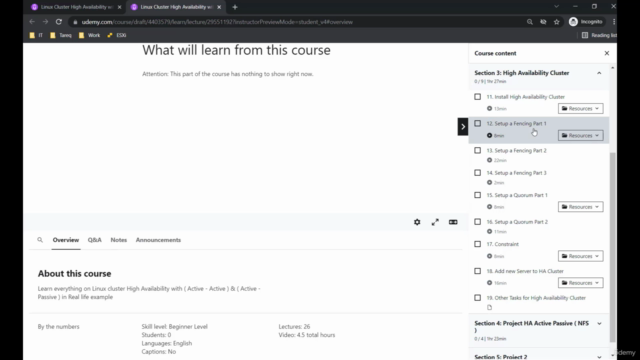Linux Cluster High Availability with 2 real life Projects
Linux HA Pacemaker ( Active - Active ) and ( Active - Passive ) in Real life example Setup on VMware ESXi hypervisor
4.11 (123 reviews)

3,634
students
6.5 hours
content
Dec 2023
last update
$59.99
regular price
What you will learn
You will learn as System Administration to setup HA Cluster
You will learn as System Administration to setup HA Cluster ( Active - Active )
You will learn as System Administration to setup HA Cluster ( Active - Passive )
You will learn how to setup Quorum on HA Cluster
You will learn how to setup Constraint on HA Cluster
You will learn how to setup Resources on HA Cluster
You will learn how to setup Fencing ( Stonith ) on HA Cluster
You will learn how to Troubleshooting HA Cluster
Screenshots




Related Topics
4403579
udemy ID
11/18/2021
course created date
11/24/2021
course indexed date
Bot
course submited by